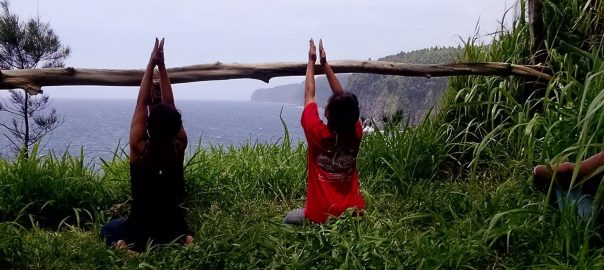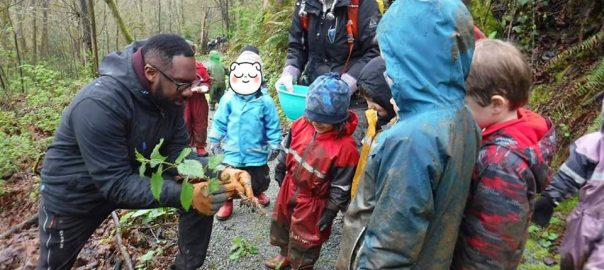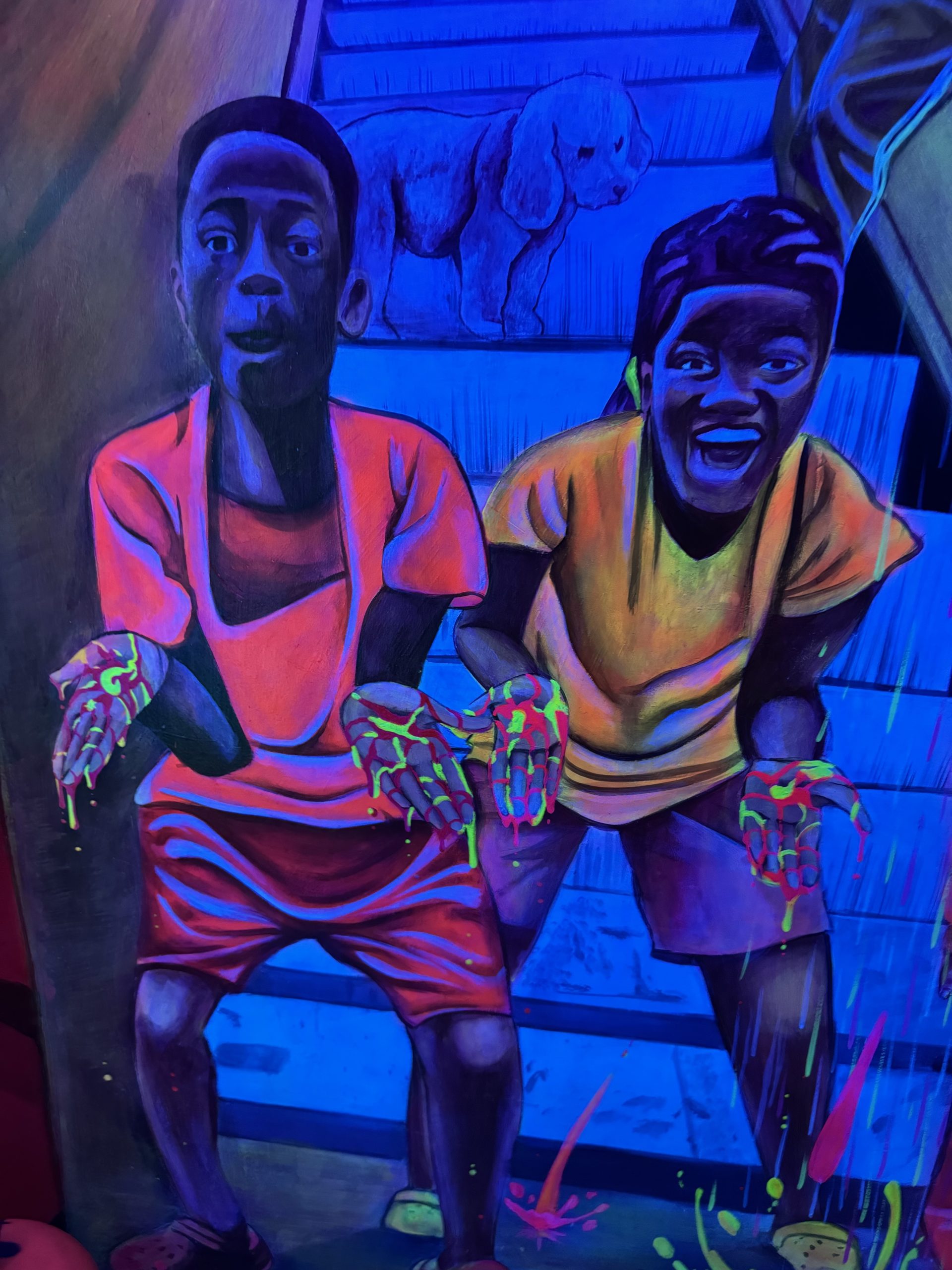Different people perceive the same city or neighborhood in different ways. While one person may appreciate ecological and social aspects of a neighborhood, another may experience environmental and racialized injustice.
Sense of place—including place attachment and place meanings—can help people appreciate ecological aspects of cities.
A place may also conjure contradicting emotions—the warmth of community and home juxtaposed with the stress of dense urban living. Sense of place—the way we perceive places such as streets, communities, cities or ecoregions—influences our well-being, how we describe and interact with a place, what we value in a place, our respect for ecosystems and other species, how we perceive the affordances of a place, our desire to build more sustainable and just urban communities, and how we choose to improve cities. Our sense of place also reflects our historical and experiential knowledge of a place, and helps us imagine its more sustainable future. In this chapter, we review scholarship about sense of place, including in cities. Then we explore how urban environmental education can help residents to strengthen their attachment to urban communities or entire cities, and to view urban places as ecologically valuable.
Sense of place
To see more chapters from the book, click here.
Research and scholarship around the relationship between “place” and learning reflects diverse perspectives, many of which are relevant to urban environmental education. Education scholars point to the need for people to develop specific “practices of place” that reflect embodied (perceptual and conceptual) relationships with local landscapes (natural, built, and human). Further, some scholars and researchers have used a lens of mobility—the globalized and networked flow of ideas, materials, and people—to build awareness of the relationship between the local and global in the construction of place in urban centers (Stedman and Ardoin, 2013). This suggests that understanding sense of place in the city generates an added set of situations and challenges, including dynamic demographics, migration narratives, and complex infrastructure networks, as well as contested definitions of natural environments (Heynen, Kaika and Swyngedouw, 2006). One critical question is how we think about sense of place in cities when places and people are constantly on the move. Given rural-urban migration, sense of place today includes where a person came from as much as where she now finds herself. In one study in a large, urban center in the U.S., Adams (2013) found that notions of “home” and identity for Caribbean-identified youth were largely constructed in the northeastern urban context in which they found themselves either through birth or immigration. Such dimensions of place relationships are vital for thinking about meaningful and relevant urban environmental education.
Sense of place is determined by personal experiences, social interactions, and identities.
Understanding sense of place in the urban context would be incomplete without a critical consideration of cities as socially constructed places both inherited and created by those who live there. Critical geographers such as Edward Soja, David Harvey, and Doreen Massey draw on a Marxist analysis to describe cities as the material consequence of particular political and ideological arrangements under global capitalism. Critical educators (e.g., Gruenewald, 2003; Haymes, 1995) have drawn upon critical geography to demonstrate how cities are social constructions imbued with contested race, class, and gender social relationships that make possible vastly different senses of place among their residents. For example, Stephen Haymes (1995) argued that against the historical backdrop of race relations in Western countries, “in the context of the inner city, a pedagogy of place must be linked to black urban struggle” (p. 129). Although Haymes was writing twenty years ago, his claim that place-responsive urban education must be linked to racial politics resonates today with the Black Lives Matter movement in the U.S. and ongoing need for environmental educators to be in tune with the political realities that so deeply inform a given individual’s sense of place. This also resonates with the notion that different people may ascribe different meanings to the same place. The complexity of meaning surrounding urban places and our understandings of such contested meanings make a powerful context for personal inquiry and collective learning.
In the U.S., Tzou and Bell (2012) used ethnographic approaches to examine the construction of place among urban young people of color. Their results suggest implications for equity and social justice in environmental education, such as the damage that prevailing environmental education narratives could do to communities of color in terms of power and positioning. Further, Gruenewald (2005) suggests that traditional modes of assessment, such as standardized tests, are problematic in place-based education; instead, we need to redefine education and research as forms of inquiry that are identifiably place-responsive and afford a multiplicity of approaches to define and describe people’s relationships to the environment.
Sense of place and urban environmental education
Although not always explicitly stated, sense of place is inherent to many environmental learning initiatives (Thomashow, 2002). A goal of such programs is nurturing ecological place meaning, defined as “viewing nature-related phenomena, including ecosystems and associated activities, as symbols” of a place (Kudryavtsev, Krasny and Stedman, 2012). This approach is prevalent in bioregionalism, the “no child left inside” movement, community gardening, sustainable agriculture, as well as in natural history, place-based, and other environmental education approaches. Place-based education has goals important to urban life, including raising awareness of place, of our relationship to place, and of how we may contribute positively to this constantly evolving relationship, as well as inspiring local actors to develop place-responsive transformational learning experiences that contribute to community well-being.
Nurturing a sense of place
With the global population increasingly residing in cities, ecological urbanism requires new approaches to understanding place. How does sense of place contribute to human flourishing, ecological justice, and biological and cultural diversity? Using a theoretical basis from literature described above, we offer examples of activities to help readers construct field explorations that evoke, leverage, or influence sense of place. (Also, see a relevant diagram in Russ et al., 2015.) In practice, urban environmental education programs would combine different approaches to nurture sense of place, perhaps most prominently place-based approaches (Smith and Sobel, 2010), which teach respect for the local environment, including its other-than-human inhabitants, in any setting including cities.
In cities, factors such as rapid development and gentrification, mobility, migration, and blurred boundaries between the natural and built environment complicate sense of place.
Experiences of the urban environment
Making students more consciously aware of their taken-for-granted places is an important aspect of influencing sense of place. Focusing on places students frequent, educators can ask questions like: “What kind of place is this? What does this place mean to you? What does this place enable you to do?” Hands-on activities that allow students to experience, recreate in, and steward more natural ecosystems in cities could be one approach to nurture ecological place meaning. Another activity could use conceptual mapping to highlight places and networks that are important to students, for example, related to commuting and transportation, the internet, food and energy sources, or recreation. Maps and drawings also might focus on sensory perceptions—sights, sounds and smells—or locate centers of urban sustainability. Such maps can help students learn about specific neighborhoods, investigate the relationship among neighborhoods, or create linkages between all the places they or their relatives have lived. Further, mapping activities may help students recognize how their own activities connect to the larger network of activities that create a city, as well as allow them to reflect on issues of power, access, and equity in relation to environmental concerns such as waste, air pollution, and access to green space.
Other observational and experiential activities to instill sense of place might include: (1) exploring boundaries or borders, for example, space under highways, transition zones between communities, fences and walls; (2) finding centers or gathering places and asking questions about where people congregate and why; (3) following the movements of pedestrians and comparing them to the movements of urban animals; (4) tracing the migratory flows of birds, insects and humans; (5) shadowing city workers who are engaged in garbage removal or other public services as they move around the city; (6) observing color and light at different times of the day; (7) observing patterns of construction and demolition; and (8) working with street artists to create murals. All of these activities could serve to develop new meanings and attachments to places that may or may not be familiar to people. The activities build on seminal works related to urban design, including Christopher Alexander’s “Pattern Language,” Randolph T. Hexter’s “Design for Ecological Democracy,” Jane Jacobs “The Death and Life of Great American Cities,” Jan Gehl and Birgitte Svarre’s “How to Study Public Life,” and the rich material coming from New Geographies, the journal published by the Harvard University Graduate School of Design.
Social construction of place meanings
Activities that allow people to explore and interpret places together could contribute to developing a collective sense of place and corresponding place meanings. Participatory action research and other participatory approaches raise young people’s critical consciousness, influence how they see themselves in relation to places, and build collective understandings about what it means to be young in a rapidly changing city. For example, photo-voice and mental mapping used during a participatory urban environment course allowed students, many of them from marginalized racial and ethnic groups, to experience a shift from viewing a community as a fixed geographic place to a dynamic, socially constructed space, and to describe how they experience and understand urban phenomena such as decay, gentrification, and access to green spaces (Bellino and Adams, 2014). These activities enabled students to expand their notions of what it means to be urban citizens, and to transform their ecological identities in ways that prompted them to take steps towards imagining environmentally, economically, and culturally sustainable futures.
Further, ecological place meaning can be constructed through storytelling, communication with environmental professionals, interpretation, learning from community members, and sharing students’ own stories (Russ et al., 2015), as well as through representation of places through narratives, charts, music, poetry, photographs, or other forms that encourage dialogue and reflection about what places are and how they can be cared for (Wattchow and Brown, 2011). Other social activities, such as collective art-making, restoring local natural areas, or planting a community garden, could contribute to a collective sense of place that values green space and ecological aspects of place. New socially constructed place meanings can in turn help to promote community engagement in preserving, transforming, or creating places with unique ecological characteristics (e.g., fighting to keep a community garden safe from developers), and create opportunities to maintain these ecological characteristics (e.g., group-purchasing solar power). Environmental educators who are able to engage with a community over time can watch these initiatives take root and grow, and can observe individual and collective changes in sense of place.
Developing an ecological identity
Urban environmental education can leverage people’s sense of place and foster ecological place meaning through direct experiences of places, social interactions in environmental programs, and nurturing residents’ ecological identity.
In addition to paying attention to social construction of place, environmental educators can nurture ecological identity, which fosters appreciation of the ecological aspects of cities. Humans have multiple identities, including ecological identity, which reflects the ecological perspectives or ecological lens through which they see the world. Ecological identity focuses one’s attention on environmental activities, green infrastructure, ecosystems, and biodiversity, including in urban places. Ecological identity in cities can be manifested in realizing one’s personal responsibility for urban sustainability, and feeling oneself empowered and competent to improve local places (Russ et al., 2015). Urban environmental education programs can influence ecological identity, for example, by involving students in long-term environmental restoration projects where they serve as experts on environmental topics, by valuing young people’s contribution to environmental planning, respecting their viewpoint about future urban development, and recognizing young people’s efforts as ambassadors of the local environment and environmental organizations (e.g., through work/volunteer titles, labels on t-shirts, or workshop certificates). Even involving students in projects that allow them to become more familiar with their community from an ecological perspective goes a long way towards adding an ecological layer to their identity and perception of their city (Bellino and Adams, 2014).
Conclusion
The environmental education challenge presented in this chapter is how to embed deeper meanings of place and identity in dynamic urban environments. Because urban settings tend to be diverse across multiple elements, ranging from types of green space and infrastructure to global migration, there are countless ways to proceed. In addition, while environmental educators can design and facilitate experiences to access and influence people’s sense of place, it is also important for educators to have a strong notion of their own sense of place. This is especially critical for environmental educators who may not have spent their formative years in a city. Such persons may have a sense of place informed more by frequent and ready access to natural areas, and less by access to urban diversity and the density and diversity of people found in an urban environment. It is important for all urban environmental educators to engage in reflective activities that allow them to learn about their personal sense of place, including what they value about the natural, human, and built environment. Demonstrating one’s own continued learning, and learning challenges, will greatly aid in the process of facilitating other learners developing sense of place in diverse urban settings. Through sharing their own experiences with places, all learners can deepen our awareness of and sensitivity to our environment and to each other. Such awareness and receptivity to place can positively influence collective and individual actions that help create sustainable cities.
Jennifer Adams, David A. Greenwood, Mitchell Thomashow, and Alex Russ
New York, Thunder Bay, Seattle, and Ithaca
* * * * *
This essay will appear as a chapter in Urban Environmental Education Review, edited by Alex Russ and Marianne Krasny, to be published by Cornell University Press in 2017. To see more pre-release chapters from the book, click here.
This essay also appears at the North American Association of Environmental Educators site.
References
Adams, J.D. (2013). Theorizing a sense of place in transnational community. Children, youth and environments, 23(3), 43-65.
Basso, K.H. (1996). Wisdom sits in places: Notes on a Western Apache landscape. In Feld, S. and Basso, K.H. (Eds.), Senses of place (pp. 53-90). Santa Fe, New Mexico: School of American Research Press.
Bellino, M. and Adams, J.D. (2014). Reimagining environmental education: Urban youths’ perceptions and investigations of their communities. Revista Brasileira de Pesquisa em Educação de Ciências, 14(2), 27-38.
Gruenewald, D.A. (2005). Accountability and collaboration: Institutional barriers and strategic pathways for place-based education. Ethics, Place and Environment, 8(3), 261-283.
Gruenewald, D.A. (2003). Foundations of place: A multidisciplinary framework for place-conscious education. American Educational Research Journal, 40(3), 619-654.
Haymes, S.N. (1995). Race, culture, and the city: A pedagogy for Black urban struggle. SUNY Press.
Heynen, N., Kaika, M. and Swyngedouw, E. (2006). In the nature of cities: Urban political ecology and the politics of urban metabolism. New York: Routledge.
Kudryavtsev, A., Krasny, M.E. and Stedman, R.C. (2012). The impact of environmental education on sense of place among urban youth. Ecosphere, 3(4), 29.
Kudryavtsev, A., Stedman, R.C. and Krasny, M.E. (2012). Sense of place in environmental education. Environmental education research, 18(2), 229-250.
Russ, A., Peters, S.J., Krasny, M.E. and Stedman, R.C. (2015). Development of ecological place meaning in New York City. Journal of environmental education, 46(2), 73-93.
Smith, G.A. and Sobel, D. (2010). Place- and community-based education in schools. New York: Routledge.
Stedman, R. and Ardoin, N. (2013). Mobility, power and scale in place-based environmental education. In Krasny, M. and Dillon, J. (Eds.) Trading zones in environmental education: Creating transdisciplinary dialogue (pp. 231-251). New York: Peter Lang.
Thomashow, M. (2002). Bringing the biosphere home: Learning to perceive global environmental change. Cambridge, Massachusetts: The MIT Press.
Tzou, C.T. and Bell, P. (2012). The role of borders in environmental education: Positioning, power and marginality. Ethnography and Education, 7(2), 265-282.
Wattchow, B. and Brown, M. (2011). A pedagogy of place: Outdoor education for a changing world. Monash, Australia: Monash University Publishing.
about the writer
David Greenwood
Dr. David A. Greenwood is an Associate Professor and Canada Research Chair in Environmental Education at Lakehead University in Thunder Bay, Ontario, Canada, where he now lives in the forest with all of its wildlife.
about the writer
Mitchell Thomashow
Mitchell Thomashow devotes his life and work to promoting ecological awareness, sustainable living, creative learning, improvisational thinking, social networking, and organizational excellence.
about the writer
Alex Russ
Alex Kudryavtsev (pen name: Alex Russ) is an online course instructor for EECapacity, an EPA-funded environment educator training project led by Cornell University and NAAEE.







Leave a Reply